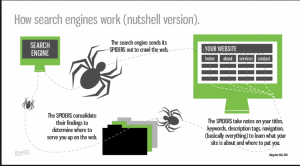Difference between revisions of "Bias in Information"
| Line 18: | Line 18: | ||
===Filtering Results=== | ===Filtering Results=== | ||
| + | |||
| + | ===Privacy=== | ||
Revision as of 13:05, 29 March 2019
Information is “the resolution of uncertainty” [reference]. The search for information along with its interpretation occurs by an observer and due to this, multiple observers searching for information on a specific topic to result to many different answers. The information that is provided to the user along with the observer’s interpretation of the given information can cause discrepancies in the final results. Bias in information is a prevalent occurrence due to the nature of how a user looks for answers. The simple act of filtering results in a specific way or only allowing certain information to be accessible to an observer can drastically change the outcome. The search for information, due to the technology readily available today, most often occurs through search engines.
Contents
Information Overload
The amount of information readily available to the public has increased to the point that a user can be provided with too much information. When this occurs we refer to it as "information overload". Information overload can be seen through the thousands of results given by a search engine, but also predates the era of modern technology and can be seen in other scenarios as well for example libraries and museums.
Search Engines
A search engine is a software system that is designed to carry out a web search on a particular query or phrase that is provided by a user.
How search engines work behind the scenes
Although a search engine is able to provide thousands of results in seconds, a lot of work occurs in the background in order to provide those results to you. In the background there are three major steps: web crawling, indexing, and the algorithm the search engine performs. In the first step a web crawler searches the World Wide Web in order to find specific documents to add to the search engine’s personal collection. Every time a document is updated or a new document is found, a crawler will add a copy of this document to a collection. This collection of documents, now kept by the search engine in a data center, can be organized and searched through based off of what a user is looking for. In the last step, the algorithm, a search engine must decide how to organize the documents to provide the user with a ranked set of results where ideally the first thing the user sees is what is most relevant to the user’s search. Before these three steps can occur, however, a user must write a query for the technology to compute results for. Typically we see this as a phrase, but can also be any type of media for example a picture.
